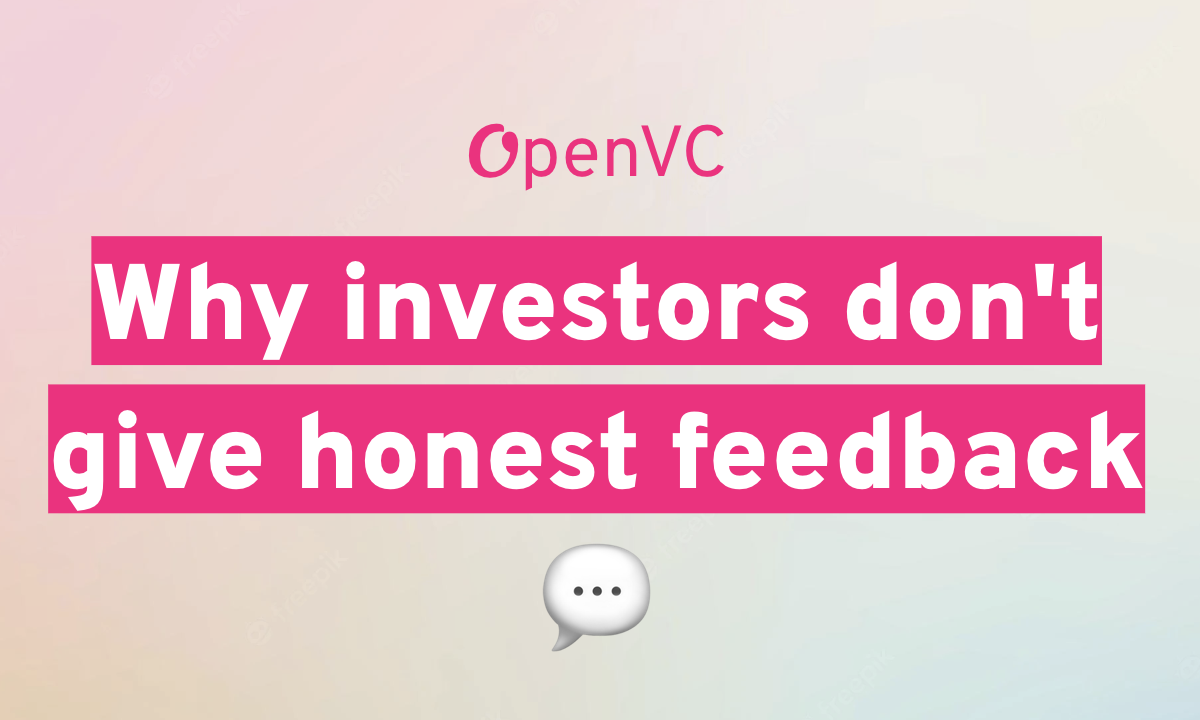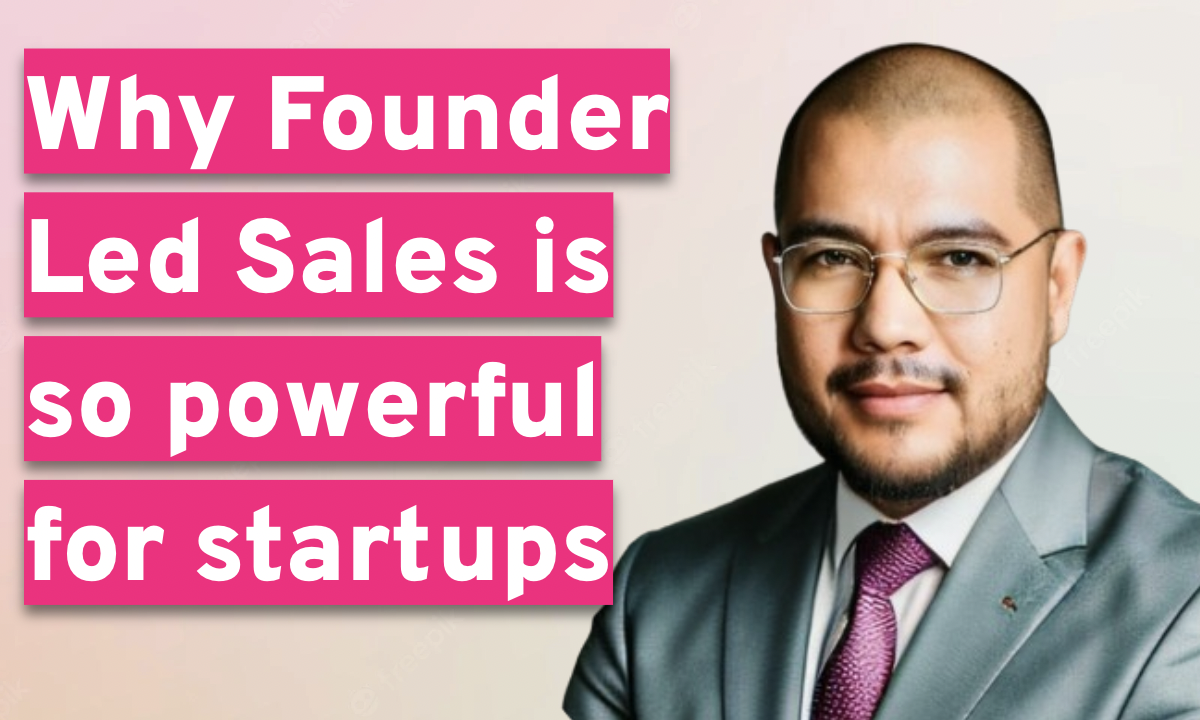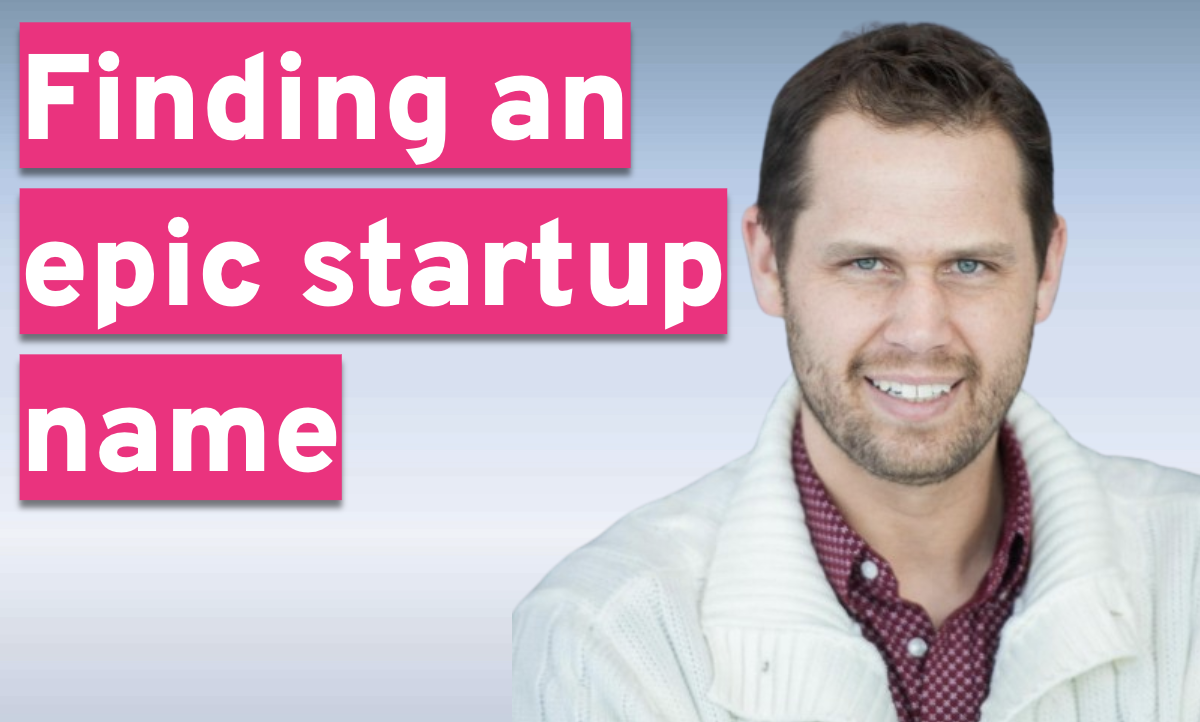Startup branding can be a double-edged sword.
Some companies craft a dazzling first impression that crumbles upon closer inspection. The product might look slick, but the experience falls flat. Others, despite offering excellent value, struggle to attract leads because their brand is a confusing mess - unclear messaging, inconsistent visuals, and a low-quality finish. They're stuck in outreach purgatory, constantly trying to convince potential customers of their worth.
The solution? A strong brand. It silently attracts leads and builds trust, acting as your silent salesperson.
Balancing branding with budget constraints is a challenge, but even a basic brand can pave the way for future success. My experience building brands with our startup design service has revealed key do's and don'ts. This guide can help you avoid pitfalls and build a solid foundation for growth, allowing you to allocate resources to key areas of branding that will get you ahead.
Table of Contents
What is a brand for startups?
For many entrepreneurs, building a company is something that you stumble through.
You learn as you go, pick up phrases and tactics but never truly know the meaning of some of these buzzwords. Brand is one of them, when we hear the word brand we might think of the logo of our favorite soft drink, their color palette and then you're met with the feeling that memory brings up. For many of you, you’re probably thinking of Coca Cola right now. The iconic red and white logo and cursive font is the image that comes to mind but with that all the moments the iconic drink was in your life. The way the company exists in your mind, the feelings it surfaces is created through their brand. It’s what customers think of when they think of your company in both the qualitative and quantitative measure. In the most simple way, it is the glasses through which people see your company.
Now that we understand the importance of a brand, where should someone start if they are building from scratch? That is by creating brand guidelines.
What are brand guidelines?
Think of brand guidelines as your rulebook, it creates parameters through which you create content, landing pages, imagery etc. Guidelines ensure that you are staying consistent with your mission and tone of voice along with color schemes and typography. Consistency is important because the more we see a brand, the more we begin to recognize it and then we start to trust it. You can imagine the extra work it takes when you aren’t carrying a consistent brand and still expecting customers to remember you.
There’s a common saying in marketing called The Rule of 7, which states that prospects need to “hear” a message at least 7 times before taking action. So if your messaging is unclear and visually you’re not creating consistent content, then it creates extra work for the prospect to understand who you are and what you’re offering. More time to convert leads, means more hours and money from your end.
Here’s what typical brand guidelines should include:
- Color palette
- Typography
- Iconography
- Visual elements
- Logo Design, primary and secondary - defining when one is used over the others
- Brand Mission
- Core Values
- Tagline
If you’re just starting out, I highly recommend checking out resources such as the Branding Style Guides. This particular platform hosts an archive of thousands of brand guides from the most prominent companies around the world. The guides can be filtered based on country, languages, industry tags, size of the guideline and even the year of publication. So if you’re looking for some more direction this will surely give you inspiration on how to approach structuring.
Where to start? The basics of startup branding.
One thing to remember is everything in your brand should be rooted back to your mission statement and your core values. So deciding on your color palette or tone, for example, before properly fleshing out these areas is never a good idea. Many startups will choose aesthetic colors or trendy phrases without ever considering if it reflects their company's mission. Yes, aesthetics matter but simply creating content that looks good but may be misaligned in other areas of the business will cause more confusion.
Craft your company story
How did this company come to be? What makes the founders uniquely positioned to solve this problem? What experience led them to create a solution?
The company story is becoming more and more important as we see startups pop-up day-by-day. It’s simple, people trust people and so understanding why this founder chose to create a company can build a solid first impression. It starts to build the trust you want to develop with your ideal customer. For example, we all know that Meta (formerly Facebook) started out of a college dorm in the early 2000’s with the intention to connect other students on campus. No matter how much the company has changed and perception has shifted, its origin story is something no one seems to forget.
Define your Mission Statement
Why does your brand exist? How do you plan to make the lives of your customers easier?
The mission statement is the goal of your business. How you intend to make a difference through your product or service. Generally this should be no longer than a sentence or two and include your target audience and what you plan to change with your company. Warby Parker, the direct to consumer eyewear company, states their mission as: to inspire and impact the world with vision, purpose, and style. It’s simple and when offering affordable eyewear, works well.
Explicit your Core Values
What principles do you stand by when it comes to your service or product?
The core values of your company is what you intend to stand by in everything you do. Anywhere from 3 to 5 values is enough and generally should be short phrases or even single words. They are essentially the way you intend to look at and treat your customers. Canva lists their four core values:
- Make complex things simple
- Set crazy big goals and make them happen
- Be a force for good
- Empower others
Identify your Ideal Customer
Who are you building this product and service for?
While ICPs can change a lot, especially in the early stages, knowing who you are talking to is everything. Think about the way you talk to a family member versus a work colleague. Tone and voice naturally changes and so thorough customer discovery research will allow you to hone in on who exactly you want to speak to and how. Lenny Rachitsky wrote a great episode for his newsletter with insight on how founders tackled the great search for their ICP. In it he included the initial customer attributes of top B2B companies like Loom.
What to extract? Brand Persona & Messaging
Once we’ve outlined the origins of our company and who we want to target. It’s now much easier to create our brand persona. The brand persona is essentially who your brand would be if they were a person. Similar to buyer personas that we build from our ICP, brand personas come through our mission statement and core values.
Brand Persona
The more detail the better, so consider every aspect of this person. What do they do for work? What annoys them? What do they do to feel inspired? How old are they? What do they choose to spend money on? What are their key traits? How do they navigate large decisions?
Once you can imagine your brand as a person, it’s much simpler to continue into the brand building process. The way you write copy, the illustrations you choose to insert in blogs all of it should be seen as if it was created and published by one person, your brand. The ever-successful beauty brand Glossier, built their brand around the millennial woman.
We created Glossier with Millennial women in mind who are willing to take ownership of their beauty routine and feel good in their own skin. They don't want to cover themselves behind the makeup but to use it as a tool to boost their natural glow. They're social media active and enjoy treating themselves - whether it's traveling or simply a bubble bath.
Tone and Voice
Tone and voice determine the way you want to talk to your customers and you want them to feel. This allows you to filter out the types of words you want to use, punctuation and the aim of your content. If you think back to your brand persona, imagine how they would interact with others. Are they helpful and type A friends? Or are they funny and relaxed?
Continue to think of these prompts until you start to see the connections between your mission and the persona you are building. The stripped down skincare brand, The Ordinary, outlines their tone and voice as follows:
We aim to inform and educate. We don’t assume they know everything about skincare. We never patronize or talk down to them. The content that focuses on the Ordinary should always be friendly.
- Think about the customer first when communicating. They are the priority.
-
Listen. Think objectively about what they are saying. Respond to every element of their question.
-
Always be friendly. It's important to provide a friendly environment to the customer at all times. Never judge.
-
Inform and educate. Keep it short and concise. Break down concepts that may be difficult to grasp.
How to decide on visuals? Logo, Colors and Fonts
Logo
First step is to create your primary logo that you will be using the most assets. In some cases you can also create some logo alternatives for social media for example but make sure to set use cases so logos aren’t being swapped unintentionally. Slack's iconic multi-colored octothorpe logo can be spotted from miles away. In their brand guide they note when to use multicolored and one colored logos, as well as background options and text variations.
Typography
When it comes to fonts, you should decide on three fonts max: one for headings, another for subheadings and finally one for the body of text. With every new social media asset, landing page copy or blog ensure that the correct fonts are being used at all times. Discord has two fonts, Ginto Nord as their primary font and Whitney as their secondary. They also note fallback fonts in instances where they cannot use their font families.
Iconography & Visuals
In addition to a company logo, you will most likely use other visual elements throughout your website and content. Decide on the types of elements you want to create, be it animations, illustrations or photography and videography. Doing it all will come across disjointed and lead to more work for your team. Notion for example has adapted these avatars whenever they choose to include illustrations which alone immediately remind us of the note taking tool.
Colors
Finally, build your color palette. Along with your primary colors, you can choose 2-3 additional colors that you can interchange with your graphics. Color conveys a lot of emotion, so it’s better to base these choices off of your core values. Spotify’s classic green and fall back colors for different devices are meticulously highlighted in their brand guide.
Don’t of Startup Branding
Not developing a brand guideline.
If you’re starting off with a team of one or two people, then it might be clear what the messaging and vision of your brand is. Imagine as your team grows, and you delegate off tasks, you need to make sure everyone is on the same page. A brand guideline will save you valuable time and cut down the amount of decisions you have to make by clearly defining what is and isn’t in alignment with your brand. Many startups will go years without nailing down their guideline and simply making decisions based on what worked for their competition, what looks nice or the recent trend. This is a dangerous loop and will greatly slow down your work.
Lacking 2-3 primary and secondary colors.
Color palettes are going to trickle into almost everything you create around your company. If your startup does not have a set of at least 2-3 primary and secondary colors - odds are a lot of your content looks mismatched. The messaging through the copy might be conveying a very different emotion to the colors being used. Using the principles of color theory and psychology can help you select colors that represent your brand. Then moving forward, you can create consistent material and much quicker.
Inconsistent fonts.
Too many fonts can be a huge distractor to a customer. Especially if you’re pushing social media content, paid ads and blogs. If the fonts are changing across every asset or are hard to read - it’s difficult for customers to connect your content to your company. Unfortunately even if you’re publishing the best pieces of writing, the value of your content can take a nose-dive because it no longer ties back to your company and isn’t creating brand recognition.
No set buyer persona.
Thinking of your band as a singular person is by far one of the best hacks to streamline brand decisions. Once you’re able to flesh out who this person is, how they behave, what they believe in etc. it guides your choices and filters out what makes the most sense for your company to pursue.
Random visual elements.
Just like fonts and colors, the visual elements you put in your blog header or on a carousel post matter. So when they are randomly being thrown onto content without seeing how recent work was created you are creating a fracture in the brand's identity. It seems simple and maybe menial but it all boils down to consistency leading to recognition which creates trust and hopeful loyal customers. The branding snowball effect.
Do’s of Startup Branding
Long term processes over impulsive decisions.
Rebranding in the middle of running your business is not a simple task. So if you’re an early stage startup create processes that will last you over the course of your company's growth. It might seem like a waste of time at first but once you implement the direction you want to go and the way your brand is going to get you there - a lot of decisions become easier to make.
Result focused
A good brand shows you how you will feel after the fact. Your product or service might be solving an issue but you’re selling the feeling after. So focus your branding on the way your customers' lives will be easier, how things will change for them fo the better.
Leaning out of AI text.
Might be a little controversial here but a strong brand identity is unique and clearly recognizable. So when it comes to creating content, your copy should all seem like it’s coming from this one person. The person who embodies all the qualities and values that your brand stands for. So heavily relying on AI, outside of grammar and formatting help, can make it difficult for people to feel connected to your content. It’s become a recognizable pattern when reading some AI writing and a similar feeling arises, slight discomfort. Overly complicated sentences, words that don’t naturally come up in speech makes you question the human touch. So while used correctly, you can majorly speed up productivity and take the extra time to stay human.
Steer away from the trends.
I’ve seen this particularly with consumer startups but their trends in every niche. Following the trend cycle will be exhausting and not every trend aligns with your company mission. I believe there is a tactful way to use trends as inspiration but only when they are vetted through your brand guidelines. Additionally, don’t be afraid to create something new, a format you haven’t seen before. Competition is everywhere and odds are you will throw yourself in a large pond by sticking to the trend cycles.
Keep it simple
Whether it’s design or copy - the best rule of thumb is to keep it simple. Stick to the basics and try to remove as much fluff as possible. When you break down the best brands, their elements are surprisingly minimal. Not much is changing but that’s exactly why it’s powerful. They have created identities overtime that are understandable without saying much. So if branding is overwhelming for you, go back to the why and choose from there.
Evolution of a Brand
As for many things in entrepreneurship, your brand won’t be perfect on the first try.
In fact, brands should be evolving with time. Many well known tech companies today went through hundreds of iterations of what they thought their brand would be. The more you learn about your customer, refine your product or service and adapt to changing market conditions - your brand will most likely undergo shifts of its own. Yet, we all need to start somewhere and I’ve outlined a skeleton to get you started.
When building your brand think of the big picture, while small changes may be implemented here and there - avoid doing major facelifts once you’ve found your niche. Evolving and rebranding are two very different things and there is a time and place for both.
About the author
Maximilian Fleitmann is the Founding Partner at Wizard Ventures and co-founder of Magier. Magier takes care of all of your design tasks and Webflow development - at a fast, reliable, and fixed monthly rate.
Unlock the secrets to startup fundraising 🚀
Use our FREE, expert-backed playbook to define your valuation, build VC connections, and secure capital faster.
Access now










